If you have ever bought a purebred animal, you will know that they are expensive. Expensive may just mean a greedy breeder, or it may mean a quality animal.
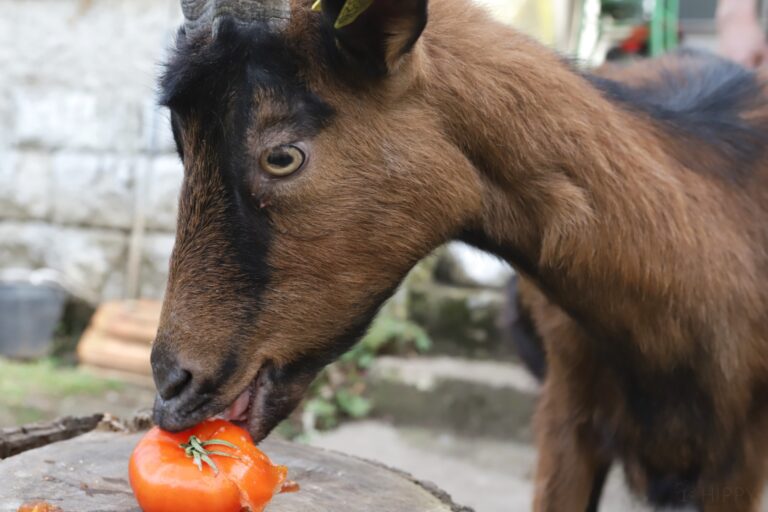
My first service dog was a purebred golden retriever. I got him as a pup, and paid a whopping $969 for him as a potty-trained pup. His dad was the national dog of the year 9 years in a row…
The breeder also selected who would get which pup and went to great pains to appropriately match both owners’ and pups’ needs.
From when he was a week old, he was assessed by an animal psychiatrist every day. He was assessed to be the quietest and most intelligent of the litter. He was also fully vaccinated.
The incredible time and effort she put into breeding the ideal, healthy dog and then matching him with me made the job of training him so easy. He really was the perfect dog. Well-worth every penny.
There is money in breeding animals. Unfortunately, there are breeders out there running puppy mills, just allowing animals to get pregnant over and over because they are too cheap to spend money on sterilization, or they just don’t have a clue what they are doing.
If you give due diligence to what you are doing, understand all the aspects of breeding, and have a realistic income in mind, you can definitely make money through breeding. You will need to know:
- What your breeding pair will cost
- How long it takes to raise a baby to selling age
- What the cost will be per day to raise the offspring to selling age/weight
- How large an area you will need for breeding and raising the animals
- What you will need in terms of resources, veterinary care, food, bowls, bedding, etc.
- And finally, what you can sell the animals for, i.e., to determine profitability take what you will sell the animal for and subtract what it will cost to breed and raise the animal
So, let us look at what animals you can ethically breed for profit, and will be best suited to your living conditions!
Table of Contents
Summary of Expenses and Profit
In short, the best animals to breed for profit are chickens, cattle, rabbits, goats, ducks, alpacas, and mice. Here’s a breakdown of the main costs and profit opportunities for each…
| Animal | # of Animals Needed to Start a Business | Setup Costs | Purchase and Selling price Per Animal | Daily Cost Per Animal | How Old Offspring Are for Sale and/or Products Sold | Profit Opportunities After Start-Up |
|---|---|---|---|---|---|---|
| Chickens | 2 roosters 10 hens | $5000 | $5 – $20 per 10 weeks old $3 – $5 per day old chick | $0.12 | day old 10 weeks | One chicken usually produces a clutch of 12 chicks Sold for $5 day old’s Sold for $20 at 10 weeks $1.27 per dozen eggs |
| Rabbits | 2 bucks 10 does | $300 | $20 per rabbit | $1.13 | 6 – 8 weeks | 1 litter is 7 – 15 kittens Sold for $20 The fertilizer can be sold for $5 to $15 per pound |
| Mice | 5 males 10 females | $300 | $20 per mouse | $0.90 | 18 days | 1 mouse produces a litter of 6 – 8 babies Sold for $20 per mouse |
| Goats | 1 male 30 females | $3000 | $100 per goat | $2.80 | 3 – 5 months | Each female produces 1 – 5 kids at a time A female gives birth up to 7 times per year Each kid is sold for $100 Sale of extra milk $4.50 per gallon |
| Alpacas | 5 males 30 females | $50000 | $3000 – $10000 | $1.00 | 14 – 16 months | Most pregnancies result in 1 baby, but the female gives birth at least 10 times in her life Selling price = $3000 per alpaca Each alpaca produces roughly 3 – 10 pounds of wool per year, the wool is sold for between $2 to $3 per ounce Sale of manure at $15 for 15 pounds Meat sells on the exotic food market at +/- $50 dollars per 16 ounces |
| Guinea Pigs | 5 males 30 females | $600 | $20 | $0.60 | 21 days | A female produces 1 – 8 pups in a Sold at $20 per guinea pig |
| Ducks | 6 drakes 30 ducks | $5000 | $2 – $10 per duckling or duck | $0.15 | 2 – 3 weeks | 1 duck produces 1 – 2 eggs per day; of these she will sit on +/- 12 eggs at a time to hatch Duck eggs are sold for about $1 each. A dozen eggs will net you $12 Each duck or duckling sells for $2 – $10 |
| Bees | 1 queen 1 colony | $300 | $25 – $32 for 1 queen $175 – $200 per established colony | $0.2 | 6 months | Income of $600 – $800 per colony for honey Production and sale of hives $15 per hive Rental for crop pollination $240 per hive Facilitating training at $160 per person |
| Horses | 1 stallion 40 mares | $1640000 | $500 – $155500 | $10.00 | 3 – 6 months | A Friesian mare produces +/- 16 foals in her lifetime Friesian horses sell for $25000 – $50000 An Arabian mare has +/- 16 foals in her lifetime Arabian horses sell for $80,000 – $150,000 Sale of semen or cost for stallion to cover a mare $1500 – $1million |
| Cattle | 1 bull 30 cows | $125000 | $2000 – $5000 per head | $520 – $905 from birth to slaughter | 1000 pounds | Selling price per yearling $800 – $1500 Selling price per 100-pound head $700 |
Chicken Raising for Profit
Chickens are a logical choice, as they are always in demand. I have owned and run a commercial chicken farm, selling primarily for consumption, but also for eggs.
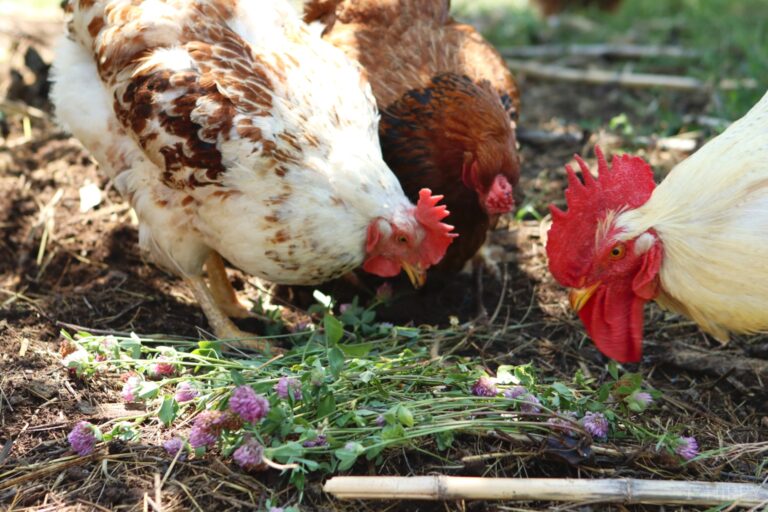
They are easy to raise but they come with one major snag: health in their runs. I was religious about the health of my chickens, cleaning every pen every time I sold off the stock, and with a 2-meter foot bath to get into the runs.
Everything went splendidly until, one day when I was not present, a spy from another farm snuck in to see how I was doing it. It jumped over the footbath because he didn’t want to get his feet wet!
As a result, my chickens developed Newcastle’s Disease, and I had to close my business for 2 years!
Be aware of who is on your property, and do not allow visitors near your pens. This is true for all the animals on this list, always ensure the safety of the animals above the curiosity of visitors.
If you are breeding for consumption, make sure you are set up, are compliant with, and registered with the USDA’s Food Safety and Inspection Service regulations.
What your breeding pair will cost:
Both a rooster and a hen will cost between $5 and $30 depending on the specific breed.
If you want to raise your own chickens from chicks the chicks will cost $3 to $5 each.
You will have to sex them before buying to make sure you have both hens and roosters. You should always have 4 hens per rooster.
How long it takes to raise a baby to selling age:
Chickens are ready to sell for slaughter when they are 10 weeks old, or they can be sold as day-old chicks.
What the cost will be per day:
Your daily cost to feed a chicken is about $0.12, depending on the food you choose to use. Organic food is much more expensive, it costs about $0.60 per day.
How large an area you will need for breeding and raising the animals
The size of the chicken run depends entirely on how big you want your operation to be. If you only have 5 chickens to breed with, you will need a very small run. In the coop you will need 2 square feet per bird, and outside the run should be 8 – 10 square feet per bird.
If you are running a large-scale operation, you will need separate runs for each batch, and each run should be 60 square feet to house 50 chickens. This is for raising chickens for consumption.
It is healthier for the chickens, and it affects the taste of both the meat and the eggs if they are free-range. This means they have a large outdoor area where they can forage and scratch about.
What you will need in terms of resources:
- Runs or outdoor pens
- Water dishes
- Feeders
- Natural supplements to ensure healthy birds (e.g., OxyE-100, Zyfend, and HealthyFlock)
- A footbath that is at least 2 meters wide and 2 meters long in front of the door or gate
- Lots of disinfectant
Raising Rabbits for Profit
Rabbits are very easy to breed with, because, well… they breed like… rabbits?
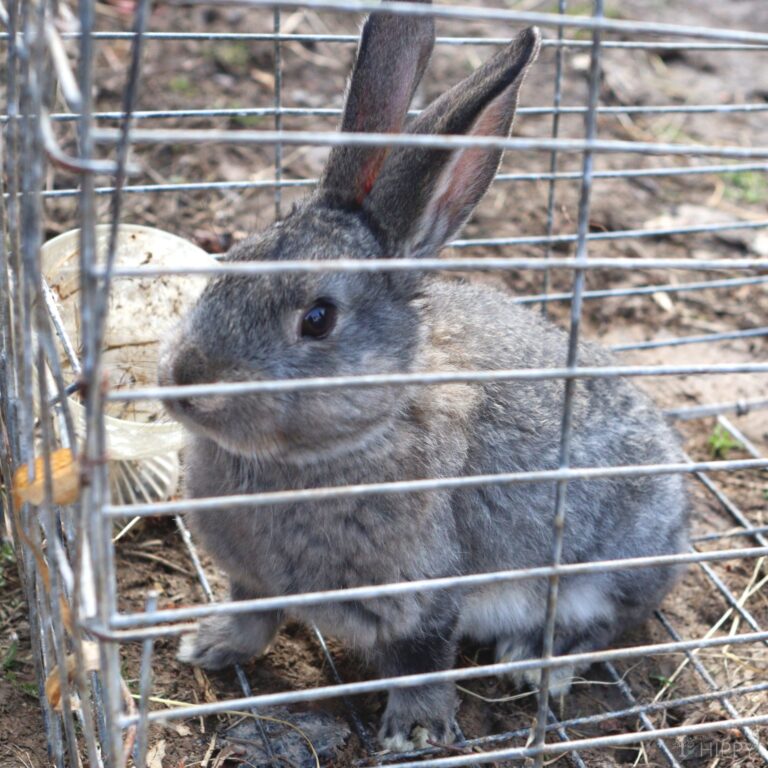
They are popular pets, but they are also popular food. If you are raising for pets, they do not need to be with you for long, just until they are weaned from their moms at 4 to 6 weeks old.
Rabbits are very profitable because they have large litters, grow quickly, and reach breeding age faster than most other animals.
What your breeding pair will cost:
The cost per rabbit can vary greatly depending on the breed and where you get your rabbits from. If you get the rabbit from a rescue group, you can expect to pay $5 to $20.
If you buy from a pet shop, you can expect to pay $20 to $30, and if you buy a specific breed from a breeder you can expect to pay $100 or more.
How long it takes to raise a baby to selling age:
Rabbits can be sold between 6 to 8 weeks old.
What the cost will be per day:
Feeding and housing rabbits costs roughly $1.13 per day, therefore your monthly cost will be about $40.
How large an area you will need:
If you have a breeding pair, you will require a cage or hutch that is at the very least 12 square feet, and a run of at least 27 square feet.
What you will need in terms of resources:
- Pellets
- Bedding
- Hay
- Vegetables
- Treats
- Toys
Raising Mice for Money
Mice make great pets, they are intelligent and can be quite affectionate, therefore, they are in demand. However, a pet is not the only reason pet shops sell them. They are largely sold as food for snakes and other animals that prey on small animals.
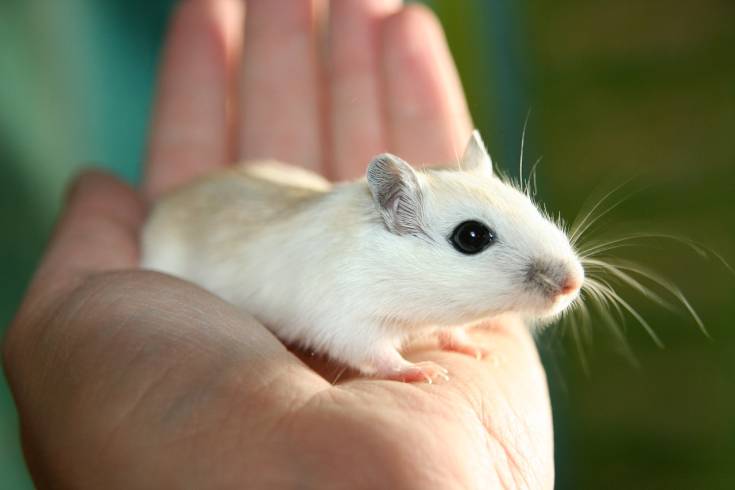
I’m a bit of a softy, so I will just imagine you in your lovely home, raising sweet little pets for all the children in your neighborhood.
They make great pets because they do not take up a lot of space, so many parents opt to start their kids, who are begging for ponies, on a mouse instead.
What your breeding pair will cost:
A breeding pair will cost between $10 to $20. Make sure you have one male and one female before you buy them.
How long it takes to raise a baby to selling age:
Mice are ready to start breeding when they are 6 weeks old, but you should not breed with your females until they are 8 to 12 weeks old – let them be kids for a while. Their babies mature very quickly and can be sold when they are just 18 days old.
The female will continue to breed all year long.
What the cost will be per day:
Mice are very inexpensive to raise, you can expect to pay $0.90 to $3 per mouse per day.
How large an area you will need:
If you just have one male and one female, you will need a cage that is at least 20 X 20 inches (60 x 50 centimeters) floorspace, and is 10 inches (30 centimeters) tall – they are escape artists!
If you want to get serious with breeding, you will need more than one female. The correct sizing of the cage is based on the number of mice in the tank.
For the first mouse, the tank should be 20 x 10 inches. After that, for each mouse you add, you should add 16 x 8 inches in floorspace.
What you will need in terms of resources:
- Cage or tank
- Bedding
- A secure mouse carrier
- Food bowls
- Water bowls
- An exercise wheel
- Toys
- A tunnel or nest they can go into to rest
Goats for Profit
If you have the space – and your flower beds are well protected – goats are a great source of income. Many households across the world are switching from cows’ milk to goats’ milk.
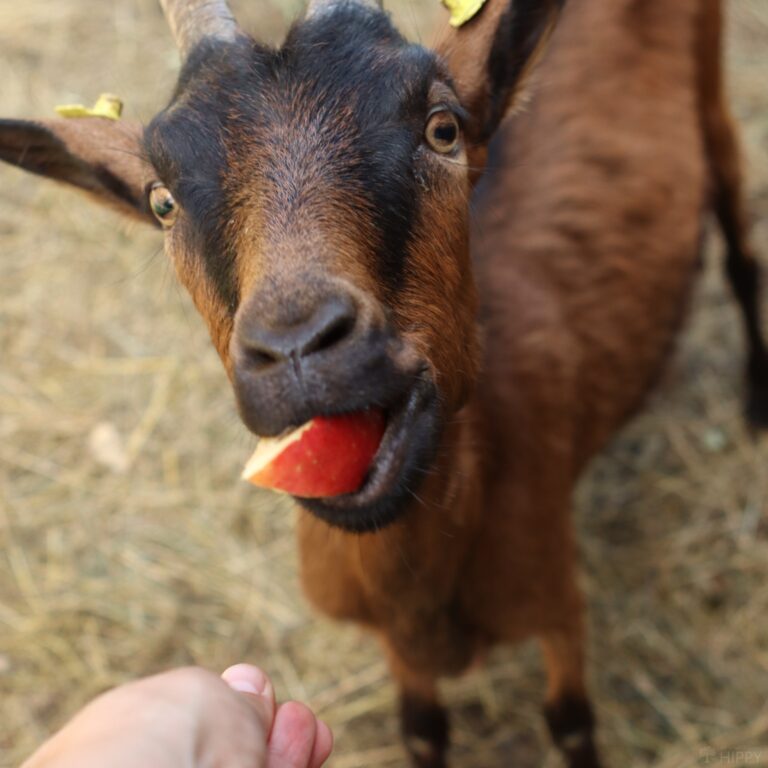
I have some experience with goat milk and all the uses for it because my preemie son was allergic to everything but goat milk.
You can make ice cream, yogurt, cheese, milkshakes, and everything you can make from dairy milk. The difference is in the taste of everything. Goat milk has a significantly higher cream and fat content and is much sweeter than cow’s milk.
Goats are also raised for consumption. Although it is more expensive than beef, it is delicious and can make a fantastic meal for special occasions.
What your breeding pair will cost:
A good rule of thumb is to start with a breeding herd of three does (female goats) and one buck (male goat). Expect to pay anywhere from $75 to $200 per goat depending on the breed and where you purchase them from.
Purebred goats and females are more expensive than males, and depending on where you buy your goats from, you can expect to pay $100 to $800 per goat.
The male can be paired with 30 – 40 females, raising the income significantly.
How long it takes to raise a baby to selling age:
Kids are normally sold when they are 3 to 5 months old.
What the cost will be per day:
Raising goats costs about $3 per day per goat. his includes food, water, shelter, and any necessary veterinary care. That is based on your breeding goats; the kids will be less, especially while they are drinking from their moms.
How large an area you will need for breeding and raising the animals:
As a general rule of thumb, each goat needs about two to three acres of land. but if you’re going large-scale straight off, with 50 goats you will need 10 acres of land.
If you don’t have that much room, you may be able to get away with keeping them in a smaller area if you supplement their diet with hay or grain.
However, if you plan on starting small and building your herd as you go, you will need 70 square feet. Some of this property needs to be roofed for sleeping and escaping wet weather, but the ability to move around and browse for food is very important too.
What you will need in terms of resources:
- An enclosed pen
- Hay bales, empty crates, old tractor tires – anything they can jump on to play
- Plenty of vegetation
- Bedding made of straw, shavings, hay, shredded paper, or corn cobs
- Shelter from wind, sun, and rain
- Toys
In addition to the monetary cost, there is also a time commitment involved in raising goats. They will need to be fed twice per day and given fresh water daily.
You will also need to brush them regularly and trim their hooves every few months. Lastly, they will need access to shelter so they can escape extreme weather conditions like heat or cold snaps.
Selling price for goat meat:
Goat meat is becoming increasingly popular due to its leanness and health benefits. As such, there is a market for it among restaurants and individual consumers alike.
The going rate for goat meat is about $4 per pound live weight. This means that a 50-pound goat will sell for about $200.
Raising Alpacas for Money
Alpacas are rapidly becoming a common farm animal…
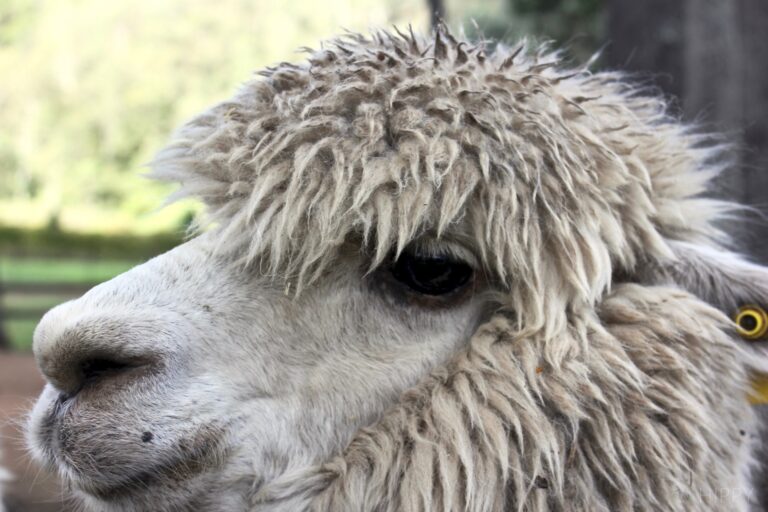
They are profitable for a number of reasons. They are primarily sold for their fleece (wool). They are shaved for their wool once a year, and each alpaca produces at least 4 pounds of wool. The wool is sold mainly to producers of alpaca products.
They are lovely, loyal pets that are very sociable, and interact freely with most other animals. They are not very keen on being petted, but do love the occasional neck scratch.
Often nature conservation reserves rent alpacas to hikers in their reserve to carry heavy packs and supplies. They are very calm and have no trouble with weight bearing.
Their poop is also sold as high-quality manure. They poop roughly 4 pounds a day! They are also kind enough to poop in the same spot every day, so collecting the manure is quick and easy.
What your breeding pair will cost:
You are most likely to pay $3,000 to $10,000 per alpaca. However, backyard accidents are often sold for $250.
If you want a specific breed and you are pinning your hopes on personality, the quality of the wool, and how the animals look, you could pay as much as $50,000.
How long it takes to raise a baby to selling age:
Alpacas are normally sold when they reach breeding age, at 14 to 16 months old. Because they are bred for their wool, the age of the alpaca you sell is not really a factor.
The price is based on the genealogy, looks, and quality of the fiber. Therefore, it is better to wait until they are of breeding age as breeders and farmers will want to see what they are paying for.
Daily costs:
Raising 3 alpacas will cost roughly $1,100 per year – that is roughly $1 / day / alpaca.
How large an area you will need:
Alpacas need roughly 1 acre for every 5 to 8 animals depending on weather, terrain, and grass available. If you do not have very lush grass in the pastures, you can either supplement with hay or allow more land per animal.
What you will need in terms of resources:
- Healthy pastures
- Hay
- Shelter from the weather
- Access to water
- A shearing shed
- (optional) a sorting shed for the wool
- (optional) a weaving shed for wool
Raising Guinea Pigs for Profit
Guinea pigs were originally bred for their meat as well as for medicinal purposes during certain religious ceremonies. They are still bred for human consumption, but they have also become profitable in other ways.
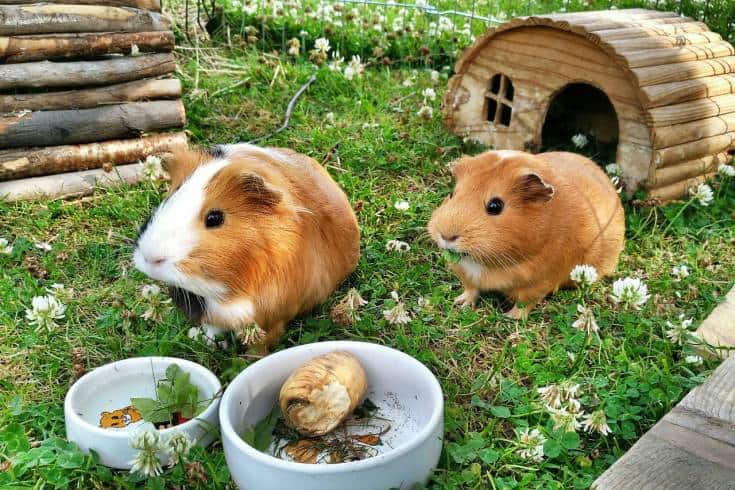
Guinea pigs are great for pets, they can be very sweet-natured.
They are also part of a huge show industry, where prizes are low, but the sense of community is high. Breed and movement are not of great value in most shows. They are judged on how cute they are, their grooming, and their personality. Perfect for pet owners of all ages.
What your breeding pair will cost:
Guinea pigs sell for $10 to $40 each, but you could pay more for the fancier breeds.
You will also need roughly $100 to buy everything you need to set up your guinea pig’s new home.
How long it takes to raise a baby to selling age:
Guinea pigs are normally weaned within 2 – 3 weeks. The maximum time they would need with mom is 21 days. They are then ready for sale.
What the cost will be per day:
For at least 2 days, the pups get their food from mom exclusively. After that, they will begin nibbling on different pellets and fresh produce.
You can expect to spend roughly $40 per month for food, bedding, and medical expenses per breeding pair. That works out at $0.60 per animal per day.
You should set aside at least $5 per month to save for vet bills. They are exotic animals therefore their medical bills can be anywhere from $20 to $60 if they do become ill.
Their status as exotic animals does put them at risk in terms of medical needs – especially during pregnancy. To minimize these risks, hygiene is of utmost importance, as is daily monitoring.
Space requirements:
Guinea pigs are very sociable. They have to have at least one other guinea pig for company. If you are breeding, that should go without saying.
The main reason I am mentioning this is for you to tell your buyers this, and encourage them to take 2 from you when you sell directly. If you sell to a pet shop, you will not be able to market them this way.
A pair of guinea pigs will need 7.5 square feet.
What you will need in terms of resources:
- Timothy hay
- Orchard or oat grass
- Fresh fruit
- Fresh vegetables
- Pellets
- Bedding (must be replaced every 3 to 4 days to prevent illness)
- Food bowls
- Water bowls
- Shelter
- Toys
- A cage or run
Ducks for Profit
Duck farming is a quick and very easy way to make money…
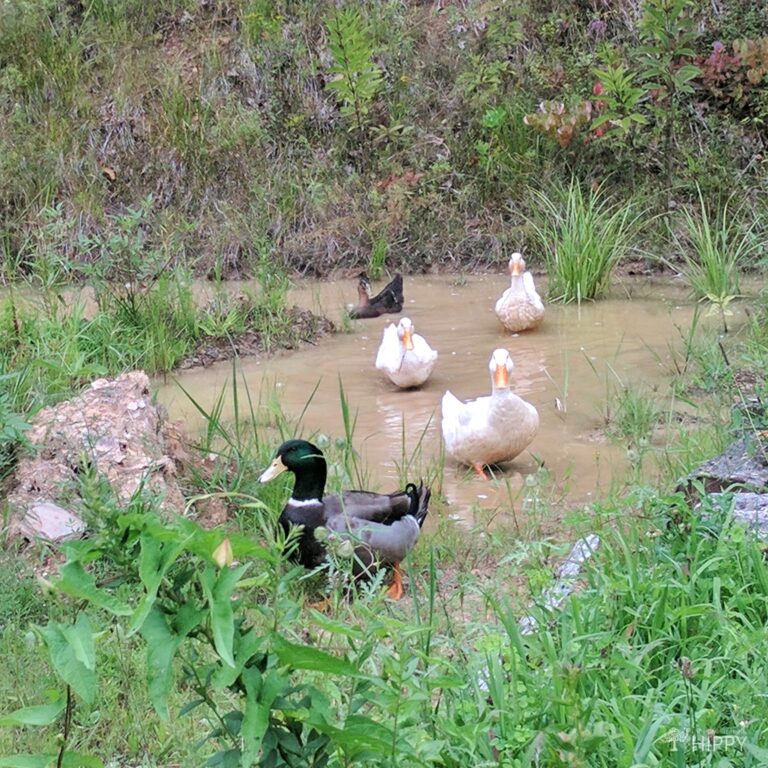
If you do choose to farm ducks for their meat and eggs, you will need to contact your local food administration board, and find out about local laws regarding the sale of consumables.
You will also most likely need to register your company or yourself if you want to sell for eggs, ducklings, ducks, or meat.
The most popular ducks to breed for the food market are Peking ducks. Originally a stable source of protein in Asian countries, Peking ducks took the world by storm.
Many restaurants – especially specialty restaurants and upper-class, fancy restaurants – now have duck on their menus.
Many people keep ducks just for their cuteness. They certainly are adorable. But they produce the tastiest meat and eggs, and their feathers are used to make the softest down feather duvets and pillows.
They are also hardy animals, and can handle the heat of summer and the cold of winter.
They are an easy and inexpensive way to bring in money.
Caution: It is very important that you sex your ducks when buying them. You should always get 4 to 5 ducks per drake. Drakes can wear a girl out, leading to death or serious injury if there are more than 1 male.
What your breeding pair will cost:
If you want to ease into duck ownership, ducklings can be bought for $2 to $10. Adult ducks cost upward of $10, depending on the breed.
How long it takes to raise a baby to selling age:
Ducklings begin to wander about outside when they are 3 to 5 weeks old; however, they cannot regulate their own body temperature until they are 7 to 9 weeks old.
They will need heat from the sun, shelter from the rain, and/or a heater of some kind.
They can be sold within 2 to 3 weeks old.
If you are raising ducks for the meat market the duck should be sold between 7 to 8 weeks, as the feathers are easier to pluck at this age. Normally the duck should weigh roughly 6.25 lbs when they are slaughtered.
What the cost will be per day:
From hatching to sale, it will cost roughly $9.50 to $11.25 per duck. That boils down to $0.15 per duck per day.
Space requirements:
Ducklings require less space than adults because they huddle together to heat when they are small.
From hatching to 4 weeks, they only require 1 square foot per duckling. From 4 to 8 weeks that should increase to 3 square feet. When they reach adulthood – 8 weeks when they are ready to be sold – they require 16 square feet per duck.
If you are breeding for eggs or pets, your ducks will require at least 4 square feet per duck.
With ducks, the larger the better, especially if you are breeding. You want to have enough room for the ducks to separate themselves from the amorous drakes (males) when they have a ‘headache’.
Mating is quite a violent act; your ducks will need lots of space for this so that they do not get hurt. You also need the space for exercise.
Your coop should allow 4 to 6 square feet per bird. And your outdoor play area should be 10 to 20 square feet per animal.
What you will need in terms of resources:
- A coop
- An outdoor play area
- Covered areas outside for shade
- Bedding
- Food consisting of worms, fish, aquatic plants, bugs, snails, toads, cribs, and mash or pellets
Raising Bees for Money
Bees have become a topic of concern globally. They are the best pollinators nature has gifted us, but we humans have been killing bees unintentionally with chemicals for decades to the extent that 17 species are extinct, 25 species are at risk of becoming extinct, and 31 species are considered highly threatened.
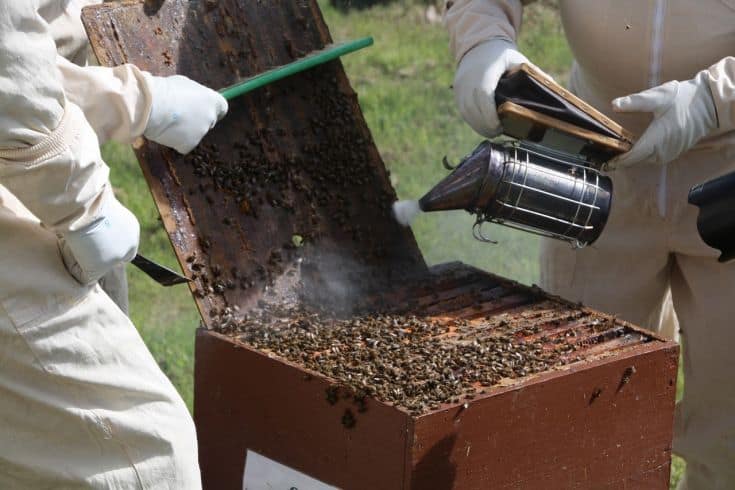
The world needs responsible beekeepers to ensure the pollination of our food supply. This means a lot of education needs to take place as well.
The honey from bees is not something that they are gifting to us. We are literally stealing their own food supply from their hives! But dang, it tastes so good!
Honey is also a natural antibiotic – I use it in my own home for this purpose, anyone who sneezes or coughs or just looks mildly off-color is issued a bottle of honey to drink throughout the course of the day and night.
By morning they are right as rain. It is also used for other medical purposes like wound care and as an ingredient in cough medicine.
What your colony will cost:
In the case of bees, the only bee that you can buy individually is the queen bee. The queen can cost you $25 to $32. She is gifted with a much longer lifespan than the rest of the hive, living for 3 to 5 years.
You only need 1 queen per hive; if you introduce more than one, the workers will kill the queen they least respect.
The rest of the bees are sold as a colony. The colony will cost you $125 to $175 for packaged worker bees. A simpler root will not cost much more than a package of bees.
You can buy an established nucleus colony complete with a queen, workers, and 5 frames with honey, nectar, and brood cells. A nucleus colony will cost $150 to $200.
There is another way that skips over these costs; you could easily trap a colony by giving them a warm dry hive to settle in.
How long it takes to profit from your bees:
Profiting off of bees is a little more complex than just selling babies. Your profits come from 4 different sources:
- Selling any spare queens – can be done anytime you hatch one
- Selling off colonies when you split them (when the hive becomes overcrowded) – can be done 5 to 6 times a year, however, some colonies struggle and cannot be split that often in a year
- Harvesting honey to sell – honey can be harvested up to 6 times a year
- Bees can be hired out to farmers to pollinate their crops; beware of pesticides though, and make sure the farmer does not use any on his crops
What the cost will be per day:
Beekeeping has an intimidating cost for starters. Buying all the equipment you need and buying the bees can set you back $400 to $460.
However, that is if you pay for your bees rather than trapping them, and it includes the once-off payments for smokers, gloves, hats, suits, hives, etc.
Once you have set up your hives, the bees will feed themselves on pollen; the only thing you really need to do is inspect the hives regularly and treat for disease or infestations.
Space requirements:
Because hives are boxes and can be stacked, the area needed for the actual hives is very small. They travel miles to collect pollen and nectar.
However much space you have got will work just fine.
What you will need in terms of resources, veterinary care, food, bowls, bedding, etc.
You will need:
- Beehive
- Smoker
- Bee brush
- Hive tool
- Veil or full bee suit
- Gloves
- Honey extractor
- Frames
- Queen catcher or excluder
- Thick mud shoes
- A little drop of essential oil to encourage the colony not to leave, they love the smell of lemongrass best, but lavender, lemon, and mint will also do the trick
- Feeders
- Sugar to help boost the bees when they are looking lethargic
- A queen marker to keep her visible for inspections
Selling price for the offspring, services, and honey:
Beekeepers charge between $165 to $240 per colony for crop pollination.
Many beekeepers provide training services to guide newcomers to this vital service that keeps our food source going.
You could charge roughly $160 per person attending a training session. I would limit classes to 10 to 15 students at a time. I also suggest spreading the training over 2 weeks as there is a lot to cover. This could bring in roughly $48000 per year.
Additionally, many beekeepers make a little extra by building and selling equipment like hives and smokers. Hives cost $150 and are really quick and easy to make.
Breeding Horses for Profit
Breeding horses can be one of the most lucrative ways to make money. But, beware! The money in horses is strictly based on the breed and bloodline.
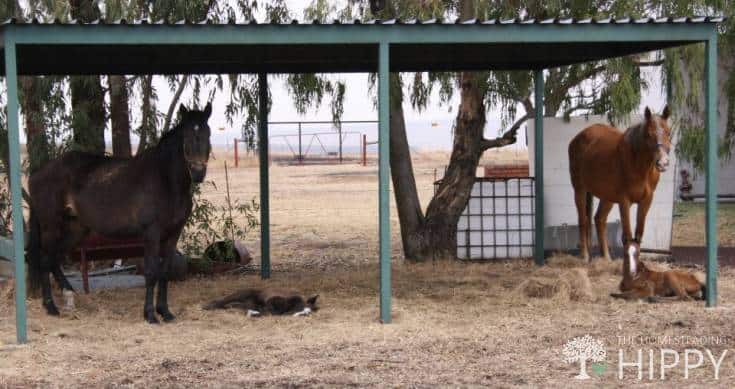
Simply putting a herd of horses together in a pasture is likely to cost more and more, and not bring in enough to cover the costs of the foal even.
The equine world is full of irresponsible backyard breeders who don’t care which horse mates with who on the playground.
They are feeding all the fanciful little girls’ dreams of wanting to own a horse. But these fanciful dreams are often abandoned in fields and pastures.
The money is on show horses, racing horses, and endurance horses.
I am not going to cover racehorses in this article. These horses are often very cruelly treated, and unethically bred.
Responsible breeders breed to have a foal to use in future competitions, to continue a specific bloodline, because a horse has a good temperament, and a good competition record.
Decide what you want to breed horses for, and then do research about the best breed for the job.
Remember this: Horse ownership is hard work; BREEDING is a whole other animal! It is hard work, and it costs a lot of money.
If you do decide to breed horses, I can tell you now, you are in for a lot of laughs. Every single time I see my horse he makes me laugh at least once during the visit.
They are highly intelligent, powerful animals with a very goofy side. They often repeat behavior just because of your reaction to the situation.
What your breeding pair will cost:
For show horses, I use Friesians as my breed of choice, as they are one of the most breathtaking breeds. Most dressage riders choose to use Frisians because of their grace and beauty.
A Friesian horse costs anywhere between $25,000 to $50,000. If you are breeding for show, you will definitely want horses on the upper end of the price range. Your pair will cost you $80,000.
For endurance horses, I will use Arabians as they are the most popular horses for endurance because of their incredible ability to go long distances and be consistent in their performance. Arabs cost $500 to $155,000.
Again, if you are a serious breeder you will want to buy horses on the upper end, your breeding pair will cost roughly $300,000.
How long it takes to raise a baby to selling age:
Most horses are weaned from their mothers at 4 to 7 months of age. They are sold at a specific age; however, they can be sold when they are 3 to 6 months old.
Many serious buyers will wait until the horse is 2 years old because their appearance and nature are clearer, and it is easier to determine whether the horse will meet the buyer’s needs.
What the cost will be per day:
Keeping a horse can cost $200 to $325 per month. This amounts to roughly $10 per horse per day.
How large an area you will need:
The amount of space needed per horse is 1.5 to 2 acres. However, this is a minimum for exercise. It is critically important that the pastures are well stocked with good-quality grazing.
If the grazing is not good, you may need double or even triple that amount of space per horse, or you will need to supplement the grazing with hay – especially in the winter months.
What you will need in terms of resources:
- A large property
- Good grazing
- A lunging arena for exercise
- Stables – each horse’s stall should be 12 square feet
- Lunging rein
- Lead reins
- A bridle
- Fly masks
- Blankets for cold weather
- Outdoor shelter from the weather
- Bit
- Saddle
- Saddle blanket
- Well-fitting girth strap
- Stirrups
- Brushes
- Hoof pick
- A trainer if you are not one yourself
- A large water trough
- Large food bowl
- Bedding
- A pitchfork
- A stable broom
- A wheelbarrow
- Hay
- Horse feed consisting of pellets, mixed grass, molasses, and beet
- An air and moisture-proof barrel for food storage to keep it fresh, healthy, and away from rodents and other food thieves
- Good riding boots
- Jocks
- A high-quality riding cap – I cannot stress the importance of this enough; every time you fall off a horse – whether you hit your head or not – you need to replace your riding cap.
- Many owners either purchase, rent, or share a horsebox; for breeders, endurance, and show horses a horsebox is vital
Selling price for the offspring:
The selling price for a horse varies for different breeds, bloodlines, the horse’s attitude and looks, and purpose of the buyer.
You can expect to sell Friesian offspring for $25,000 to $50,000 each. For Arabian horses that are bred for more than just recreation, you can expect to sell the offspring for $80,000 to $150,000.
Breeders also make money by selling semen or covering other breeders’ females. If you do this, I recommend intense medical assessment before allowing your stallion to cover another stables mares.
There are illnesses invisible to the eye that are carried by mares. Some of which will render your stallion infertile.
Cattle
Breeding cattle is a lucrative enterprise, whether you are breeding for meat, dairy, or show. The biggest breeding for profit animals are beef cattle.
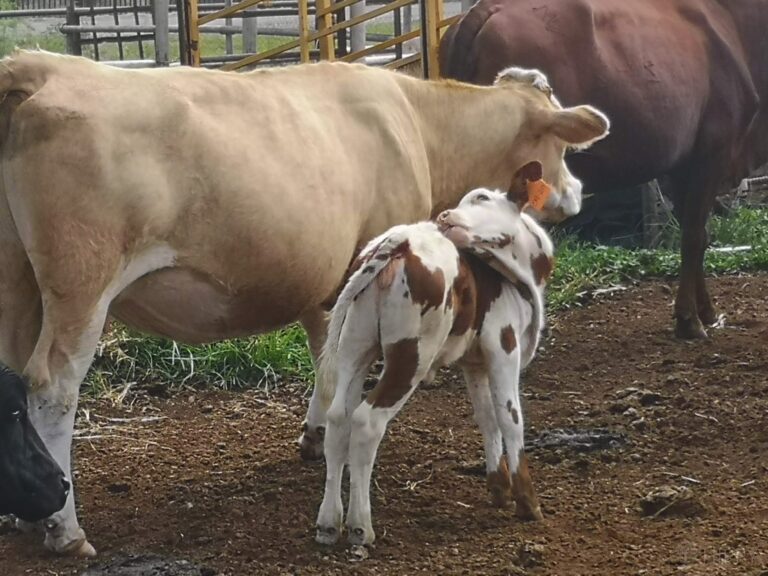
If you are breeding for dairy or for human consumption, you will need to contact your municipality to learn everything you can about bylaws and registration with the food safety board.
They have a specific set of rules to ensure that anything consumed meets all their health, humane, and the impact on the environment standards.
Here is something you may not know: cattle are bred to enter into show competitions.
Cattle are not easy to breed, raise, and sell. The 2 biggest concerns are feeding the animals and keeping the herd healthy in compliance with food and safety regulations.
What your breeding herd will cost:
The overall ratio of bulls to cows is 1 bull for every 20 to 30 cows. This means your initial expense for purchasing a breeding herd will be significantly higher than any other animals to breed for profit on this list. If you have the money, you will very quickly make it back with interest.
You can expect to pay $2,100 to $5,000 for a bull and $2,000 to $5,000 for a cow.
Considering that you need 1 bull and 30 females, with the cost of $4000 per female, your first breeding herd will cost $125000. Fancy breeds will cost more.
How long it takes to raise a baby to slaughtering age:
Calves need at least a year to grow big enough, or I should rather say until they weigh enough. You do not want to sell off a calf too soon. It needs to weigh 500 to 1,000 pounds.
What the cost will be per day:
The cost per day is greatly entwined with the grazing they have access to. Especially in the winter months when the grass is dead and dry.
It will cost roughly $500 to $1,000 from birth to slaughter at a weight of 500 to 1000 pounds. It will cost $1 per head of cattle per day.
How large an area you will need:
Cattle need 500 to 800 square feet each. Grazing is of utmost importance. It will either cost a lot of money to buy food, grass, and hay, or it will limit the number of animals able to thrive is the grazing is not good.
What you will need in terms of resources:
- A big property
- Feed
- Shelter
- Access to water
- Feed station
- Health care equipment – vaccines, hoof picks
- Fencing tunnels for vaccines and health checks
Selling price for the offspring for slaughter:
The sale of beef cattle is based on the weight of the animals. The average amount of money you can earn is $140 per 100 pounds.
Since cattle need to be at least 500 to 1000 pounds, you should get at least $700 per head.
Dairy Cows
You’ve decided to take the plunge into dairy farming. Congratulations! Dairy farming is a rewarding and challenging industry that provides many opportunities for small businesses to thrive. But before you can start milking cows, there are a few things you’ll need.
The first thing you’ll need to do is make sure you are in compliance with all local, state, and federal regulations regarding dairy farming. This includes applying for any permits or licenses that may be required in your area.
How large an area you will need:
You will need at least two acres of pasture per cow. If you don’t have enough pasture, you can supplement with hay. You will also need a shelter for your cows to get out of the weather.
What your breeding herd will cost:
A good Holstein dairy cow can cost anywhere from $1,000 to $2,000. You will also need to buy a bull if you want to breed your own cows. Expect to pay $500 to $1,000 for a good Holstein bull.
What the cost will be per day:
The biggest daily cost of raising dairy cows is feed. A gallon of whole milk requires about 8 lbs of dry matter feed per day.
The cost of feed will vary depending on the type of feed and the time of year. Roughly speaking, expect to spend $2 per day on feed per cow.
Other daily costs include minerals and water. You will also need to provide your cows with salt and mineral blocks. These cost around $10 per ton.
You should plan on spending $4 to $5 per day per cow on these miscellaneous items.
In summary, expect to spend around $6 to $7 per day per cow on costs associated with raising dairy cows.
What you will need in terms of resources:
To successfully raise dairy cows, you will need access to fresh water, quality pasture, and adequate shelter. You’ll also need money for buying animals and daily expenses like feed and minerals.
Sheep
The first benefit of raising sheep is that they require less land than other animals such as cows. This is important because it means that you can get started with a smaller piece of property.
Additionally, sheep are browsers rather than grazers, so they can actually improve the quality of your pasture since they don’t pull up all the grass when they eat.
Sheep also provide a number of products that can be sold for profit. The most obvious product is wool, which can be used to make clothes, blankets, and other textile items.
Sheep also produce milk, which can be made into cheese or yogurt. Mutton (sheep meat) is another product that can be sold, and it’s actually quite popular in some parts of the world such as New Zealand and Australia.
Perhaps one of the biggest benefits of raising sheep is that they are relatively easy to take care of compared to other animals. They don’t need to be vaccinated as often as cows, and they don’t require as much food per pound as pigs or chickens.
Additionally, if you have a predator problem such as coyotes or foxes, you can get guard dogs to protect your flock.
How large an area you will need:
The first thing you need to consider when deciding whether or not to raise sheep for profit is how large an area you have available.
A single sheep needs about two acres of pastureland on which to graze, so if you don’t have at least a few acres of land available, raising sheep is probably not going to be a viable option for you.
Additionally, if the pastureland you have available is not suitable for grazing (i.e., it’s too dry or has too many rocks), then raising sheep is also going to be difficult.
What your breeding herd will cost:
The second thing you need to take into account is the cost of purchasing animals for your herd. A quality ewe (female sheep) will cost between $200 and $300, while a quality ram (male sheep) will cost between $250 and $350.
So, if you’re planning on raising 100 sheep, you can expect to spend at least $20,000 on purchasing animals for your herd.
What the cost will be per day:
When considering the costs of raising sheep, it’s important to factor in the daily costs of feeding and caring for them. On average, each sheep will consume about 0.5% of its body weight in hay or grass every day.
So, if you have 100 sheep that weigh 200 pounds each, they will eat about 1 ton of hay per day. Additionally, each sheep will require approximately 2 gallons of water per day.
What you will need in terms of resources:
In addition to the land and water required to raise sheep, there are a few other resources you’ll need in order to be successful.
First, you’ll need a shelter where your animals can go to escape bad weather and where they will be safe from predators (i.e., dogs, coyotes, etc.).
Second, you’ll need fencing around your pastureland in order to keep your sheep contained and safe from wandering off into areas where they could get lost or hurt.
Finally, you’ll need some sort of feed storage system in order to keep your hay dry and protected from rodents and other pests.
Selling price for the offspring (lambs) for slaughter:
Once you’ve taken all of the costs into consideration, it’s time to think about what you can expect to receive when selling the offspring of your herd for slaughter.
The price you receive will depend on a number of factors such as the quality of the animal and the current market conditions; however, on average, you can expect to receive between $0.60 and $0.80 per pound live weight.
For example, if you have a lamb that weighs 50 pounds live weight and is sold at $0.70 per pound, you would receive $35 for that individual lamb, butchering costs notwithstanding. In comparison, mutton (meat from an adult sheep) sells at a lower price.
Don’t forget that breeding sheep for other purposes, like wool or milk production, can be profitable as well.
Pigs
Pigs are intelligent and social animals that can be profitable in a number of ways.
The profitability of breeding pigs depends on a number of factors, including the price of pork, the cost of feed, and disease. The price of pork is determined by supply and demand.
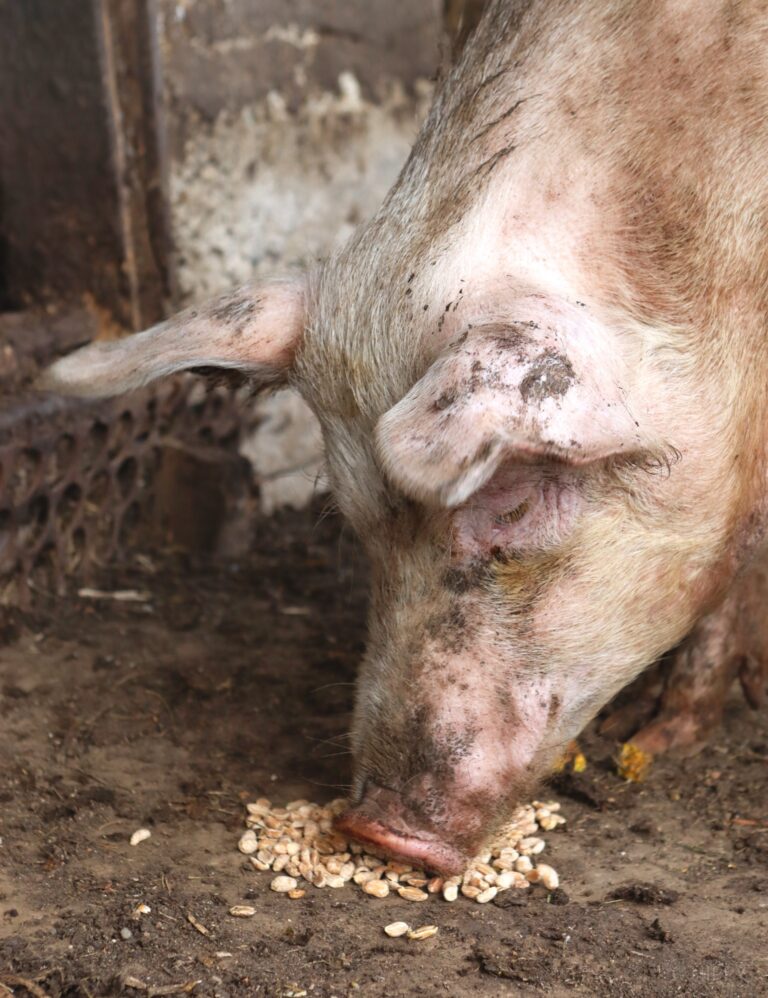
The demand for pork is largely driven by population growth and per capita income. The supply of pork is determined by the number of pigs that are slaughtered each year. In recent years, the price of pork has been on the rise due to strong global demand.
The cost of feed is another important factor to consider when determining the profitability of your operation. Feed costs have been on the rise in recent years due to rising grain prices. Disease can also affect the profitability of your operation.
Diseases such as porcine reproductive and respiratory syndrome (PRRS) can result in significant financial losses. However, if you’re willing to take on the risk, there can be a lot of money to be made in breeding pigs.
How large an area you will need:
One of the great things about pigs is that they don’t require a lot of space. A single pig needs around 6-8 square feet of space, so 10-12 pigs can comfortably live in an area roughly the size of a 3-car garage.
This makes them ideal for small farmers or anyone with limited land. Of course, you’ll need to provide shelter for your pigs as well—we’ll touch on that more later.
What your breeding herd will cost:
The cost of your breeding herd will depend on a number of factors, including the type of pig you choose to raise and the market conditions in your area.
On average, breeding stock costs around $150 per sow (female pig) and $75 per boar (male pig). So, if you’re planning to raise 10 pigs, you can expect to spend around $1,500 on your breeding stock alone.
What the cost will be per day:
The daily cost of raising pigs will vary depending on a number of factors, including their age and weight. For example, baby pigs (known as “piglets”) will eat less than fully grown adults.
Additionally, younger pigs grow faster and will require more food than older pigs.
With that said, you can expect to spend anywhere from $0.50 to $2 per pig per day on food—or about $10-$20 per day for a group of 10 pigs.
Of course, these numbers will fluctuate depending on the cost of food in your area and how much your pigs eat.
What you will need in terms of resources:
In addition to food and shelter, there are a few other resources you’ll need to raise healthy and happy pigs.
One important resource is water—pigs require 2-5 gallons per day (or 10-20 gallons per day for a group of 10). You’ll also need some sort of enclosure to keep your pigs safe and contained—a simple fence will do the trick.
And last but not least, you’ll need bedding material like straw or hay to keep your Pigs comfortable—aim for 1-2 inches of bedding per pig.
The selling price for pig meat will vary depending on a number of factors such as weight, quality, and demand in your area.
However, you can expect to sell your pig meat for anywhere from $1-$4 per pound live weight—which means you could potentially make $400-$1,600 from selling just one pig!
Of course, the actual amount you make will depend on how much your pig weighs and how much buyers are willing to pay in your area.
You could also sell piglets for profit. The average piglet sells for around $75 to $300 depending on breed, location, and time of year.
Cats
Cats have been family pets for many years. You don’t need any particular equipment to breed them. They are very affectionate and intelligent animals and are easily house-trained so keeping them indoors is certainly an option.
Cats can be raised for both shows and work – with some breeds being used to control the rodent populace. They don’t need much in terms of space – as long as they can run around, they’re happy.
They will occasionally get bored but it’s nothing a big ball of yarn and a whole lot of toys won’t solve.
As far as costs go, it depends on the breed but on average you’re looking at around $600 – $1000 per cat – and that’s excluding all the veterinary work that needs doing beforehand (deworming, etc.), food, and general maintenance. Some commonly bred cats include:
• American Wirehair (cost of purchase: $1000 – $1,200)
• Ragdoll (cost of purchase: $1000 - $1,300)
• Russian Blue (cost of purchase: $500 - $1000)Dogs
Man’s best friend has been used for everything from companions to hunting, security, and medical service (i.e. guide dogs, seizure alert, etc.).
This makes dogs a popular option for breeding. The cost of your dog will vary depending on the breed, but you’ll be looking at a few thousand dollars. Popular breeds include:
• Golden Retrievers (cost of purchase: $900 - $2000)
• German Shepherds (cost of purchase: $450 - $1,900)
• Rottweilers (cost of purchase: $2000+)Keep in mind that you’re looking for good, pedigree cats and dogs.
Your profit margin will vary depending on how many kittens and/or puppies your sell, BUT between the income and the expenditure you’re looking at an average profit of between $300 – $500.
Fish
Fish are one of the easiest animals to breed and maintain.
If you’ve got a good size aquarium (some fish are picky about their environment), a good thermometer to maintain water temperature, and a good filtration system to keep the tank clean, you’re good.
You can make serious money breeding fish, they breed easily and typically birth dozens of babies at a time. Different breeds will make different amounts of money with some breeds bringing in thousands. Common fish to breed include:
• Guppies (cost of purchase: $5 - $20)
• Neon Tetras (cost of purchase: $2- $20)
• Koi (these can cost anywhere from $15 to $5000 depending on what type of Koi you’re breeding).Birds
Birds are a popular pet, but they do require quite a bit of research before you start breeding them. Setup costs will vary between breeds with some being more expensive than others.
Birds like African Greys and Macaws require a lot of space (particularly true for macaws as they can grow quite large) and are known for being super talkative/vocal and intelligent. One great example is Einstein the African Grey:
How cool is that? Einstein knows some 200 words and sounds like all African Greys she learns new stuff all the time. That’s one of the reasons African Greys are popular choices for breeding.
You typically pay between $1000 and $1500 to purchase a breeding pair and the young can be sold for the same amount.
Macaws are another popular bird for breeding, but they require a lot, I repeat, a LOT of attention. They come in a variety of colors and your cost of purchase per bird will vary depending on the variation.
For example, blue and gold macaws can cost up to $1500 dollars individually so a breeding pair would be $3000.
On the other hand, scarlet macaws can cost around $3000 – making your breeding pair a $6000 purchase. Like with African Greys, the selling price for the young is the same as the purchase price for the parents.
Bearded Dragons
Bearded dragons, this may surprise you, but these little guys can be serious money-makers – selling for upwards of $900 depending on the dragon! Apart from the general cool factor of owning a pet with ‘dragon’ in its name, they come in a variety of colors and are super gentle and friendly.
They are very social animals and are naturally curious and love to explore. They’re also super cuddly – no, really, they love to cuddle.
How cute is that?
Snakes
Snakes… not really something you’d think of when thinking of pets. Considering how many of them are deadly, that’s not really a surprise but they’re apparently very popular.
Depending on the breed you can sell them for upwards of $700 dollars – that’s not chump change. Commonly bred snakes include:
• Corn Snake (cost of purchase: $22 - $335)
• Boas (cost of purchase: $50 - $150)
• Python (cost of purchase: $15 - $1000+)Now, it’s important to note that you do need to be careful when working with snakes – even the non-venomous ones.
Constrictors (i.e. pythons, boas, etc.) have a nasty bite, and because they have recurved teeth, it’s going to be very difficult to get free without significant injury.
In terms of venomous snakes, because of course, they’re kept as pets as well, you’ll need to have permits for each snake.
Apart from that you also need to meet certain environmental requirements to make sure your snakes do well.

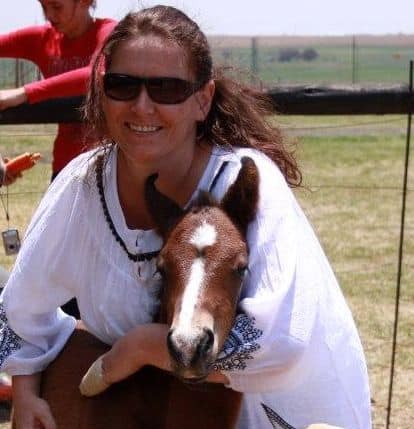
Di-Anne Devenish Seebregts was raised in an environment where daily life consisted of hiking, environmental conservation, growing fruit and vegetables, and raising poultry for meat and eggs.
She combined her passion for the writing word with her love of the pride that comes with not relying on others. She raised three children (who are now adults) to value the environment, and understand the value of being self-sufficient.
Find out more about Di-Anne on our About Us page.
